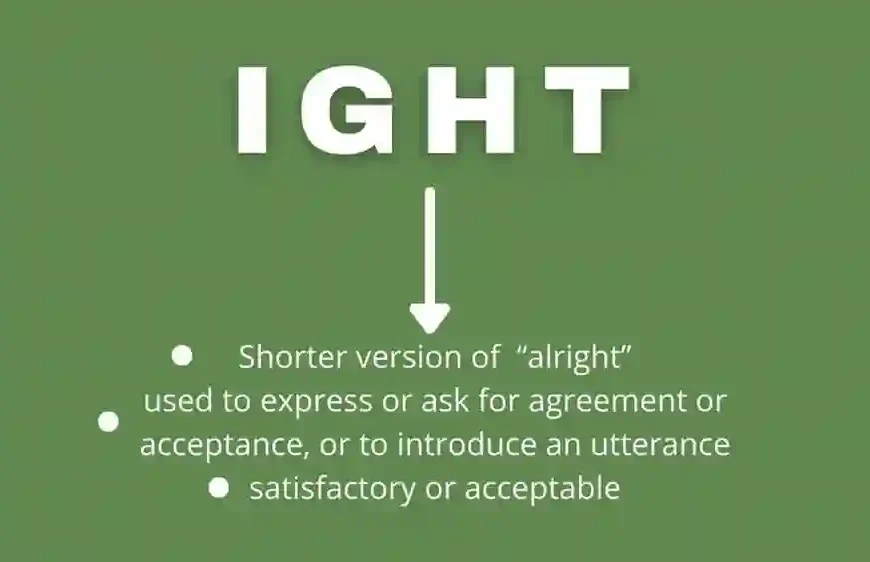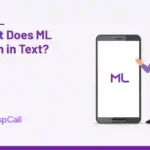Understanding what does ml mean in text: A brief overview
To better understand what “ML” means in context, it is fundamental to have an essential understanding of what is involved in machine learning. At its core, machine learning is a subset of artificial intelligence that involves preparing computations to recognize patterns within data. Instead of relying on express information, machine learning models use pragmatic methods to make expectations or choices based on past information. There are three essential types of machine learning: Supervised learning: This type of learning involves preparing a demonstration on labeled information. The framework learns by inputting information from partners including yielding corrections. Once prepared, it can infer results from unused, ambiguous data. A case would be a machine learning display that is trained to recognize pictures of cats and pooches, where training is given the labeled pictures on the show (eg, “cat” or “dog”). Unsupervised Learning: In unsupervised learning, the show is given unnamed data and the framework needs to discover designs or groupings in the data it claims. A common application of unsupervised learning is clustering, such as grouping clients with comparable buying habits. Reinforcement Learning: This type of learning is based on a structure of rewards and punishments. Exhibit learns by taking actions in the environment and receiving input into those actions. Castle learning is commonly used in mechanical engineering and gaming.How machine learning relates to text
In the what does ml mean in text content setting, machine learning plays an essential role in managing, analyzing and understanding dialects. Common Dialect Preparatory (NLP), a branch of machine learning, specifically focuses on getting machines to acquire and associate human dialects. From opinion polls to machine interpretation, NLP is a powerful tool that allows computers to translate content and generate responses in a human-like way. Machine learning computations can be tailored to recognize content information such as words, expressions or indeed sentence structure patterns. It empowers frameworks to perform assignments such as dialect interpretation, content summarization, and address answering. Over time, the framework builds up more data, increasing its ability to receive and make predictions about human language.Key applications of ML in text
Machine learning connects to content in a number of ways. Below are some obvious areas where ML is revolutionizing content investigation and interpretation:1. Hypothesis analysis
Sentiment testing involves deciding the emotional tone or opinion communicated in a piece of content. Machine learning calculations can be tailored to identify positive, negative or neutral opinions within client surveys, social media posts and news articles. For occasion, brands routinely use hypothesis testing to gauge client criticism and keep it open. By analyzing huge datasets of content, machine learning models can distinguish patterns of opinion and help businesses make educated decisions.2. Classification of Content
Text classification is the preparation of classifying content into predefined categories. Machine learning models can be used to naturally categorize news articles, emails or social media posts based on themes such as sports, legal issues or excitement. In cases, spam channels use machine learning calculations to classify emails as “spam” or “not spam” based on the content of the email.3. Machine translation
Instrumental interpretation is the preparation of interpreting content from one dialect to another. Conventional tools like Google Interpret and DPL rely heavily on machine learning to drive interpretation accuracy. By generating endless datasets of interpreted content, machine learning models can learn to generate interpretations that preserve the meaning, tone, and fashion of unique texts.4. Condensation of content
Text summary refers to the handle of creating a brief outline of a longer piece of content. Machine learning models can be trained to identify the most important data in an archive and create an outline that captures the nuances of the material. This can be especially valuable for summaries of news articles, papers, or inquiries about legal documents.5. Chatbots and Virtual Assistants
One of the most unequivocal applications of machine learning in what does ml mean in text content is the advancement of chatbots and virtual colleagues like Siri, Alexa, and Google Right Hand. This framework uses machine learning to receive client queries, generate appropriate responses and actually have context-aware discussions. By continuously learning intuitively, these collaborators have become more successful over time at understanding and responding to a wider range of characteristic dialect requests.6. Speech recognition
Speech recognition innovation, which changes content from spoken dialect, is another area where machine learning plays an important role. Virtual assistants and translation administration use machine learning computations to accurately interpret spoken dialects. These frameworks learn to recognize patterns in speech, such as highlights, sounds, and accents, to provide more accurate results.7. Theme modeling
Topic modeling is a method used to find basic topics or topics within a large collection of texts. It is routinely used to analyze scholastic papers, news articles or client surveys. Machine learning calculations can reveal cover up designs in content and collect related records together. It can help organizations get its patterns, recognize growing issues, or recommend strides substances.Data segmentation in machine learning and content analysis
what does ml mean in text information is the establishment of machine learning. Without data, there would be no designs to recognize, no bits of knowledge to gather and no expectations to create. In terms of content, information comes in the frame of written material, whether it’s a tweet, a book, a client survey, or a restorative record. The more data a machine learning program is fed on, the more it can learn and perform its tasks. However, the quality of information is just as important as the quantity. Content information regularly needs some time pre-processing recently it can be used to prepare a machine learning show. This includes assignments such as tokenization (partial content in words or expressions), stemming (reducing words to their base form) and removing halt words (common words such as “the” or “and” do not include substantives). Once this data is sorted, it can be fed into a machine learning calculation to help the framework learn.Challenges and limitations of ML in text
Although machine learning has seen significant success in numerous text-based applications, there are still some challenges that need to be addressed: Ambiguity in dialects: Human dialects are invariably ambiguous. Noise can have many effects depending on the setting, making it difficult for machine learning models to consistently translate content. In cases, the term “bat” can refer to a flying warm-blooded animal or a piece of sports gear, and the exhibitor must obtain the setting in which it is used. Bias in data: Machine learning models learn from data, and if the data is one-sided, the show will be one-sided. This can lead to incorrect or out-of-line results. For instance, if a hypothesis investigation show is prepared on the basis of one-sided data, it may cause bias when analyzing the content of a specific population. Complexity of human sentiment: Whereas inference investigations can decide whether a piece of content communicates positive or negative sentiments, it is often problematic for machine learning models to obtain complex sentiment or mixed inferences. In cases, mocks and mismatches can be particularly challenging to read correctly for models. Ethical Concerns: The use of machine learning in content testing raises ethical concerns related to security, data protection and potential misuse of AI. In cases, extensive use of surveillance innovations dependent on content investigation may lead to violations of security rights.The future of machine learning in text
As what does ml mean in text continues to advance machine learning, its portion of content testing is actually expected to develop more noticeably. Changes in common dialect understanding and eras will likely lead to more modern AI frameworks capable of performing tasks such as real-time dialect interpretation, progress hypothesis investigation, and indeed innovative writing. Furthermore, the power of ML in content is increasing with the emergence of broad dialect models (LLMs) such as OpenAI’s GPT. These models can create human-like content, answer questions and perform tasks within different spaces. As innovation evolves, we can indeed expect more innovative applications, smarter computing chatbots, robotic substance creation and personalized text-based services.Conclusion
In the rundown, the address what does ml mean in text? Indicate the application of machine learning techniques in content understanding, preparation and production. From hypothesis testing and content classification to machine interpretation and chatbots, machine learning is playing a transformative role in how we connect with and make sense of content. While challenges remain, particularly around uncertainty, trends and ethical concerns, the future of ML in content looks bright. As innovation advances, machine learning will advance to power modern ways of analyzing, translating, and creating content, reshaping business and upgrading our advanced encounters.Read More latest Posts
- How to Deposit and Withdraw Funds Securely on Rupee7
- Kemono Party: The Best Digital Art Hub in 2024!
- Unbeatable Odds and Features at Metabet63 Nepal Betting Site
- Food Fonts: How Typography Influences Appetite and Restaurant Branding
- UFABET Direct Website – No Agents, Just Pure Betting Action
(Visited 11 times, 1 visits today)
Tags: What does ml mean in text Last modified: January 9, 2025










